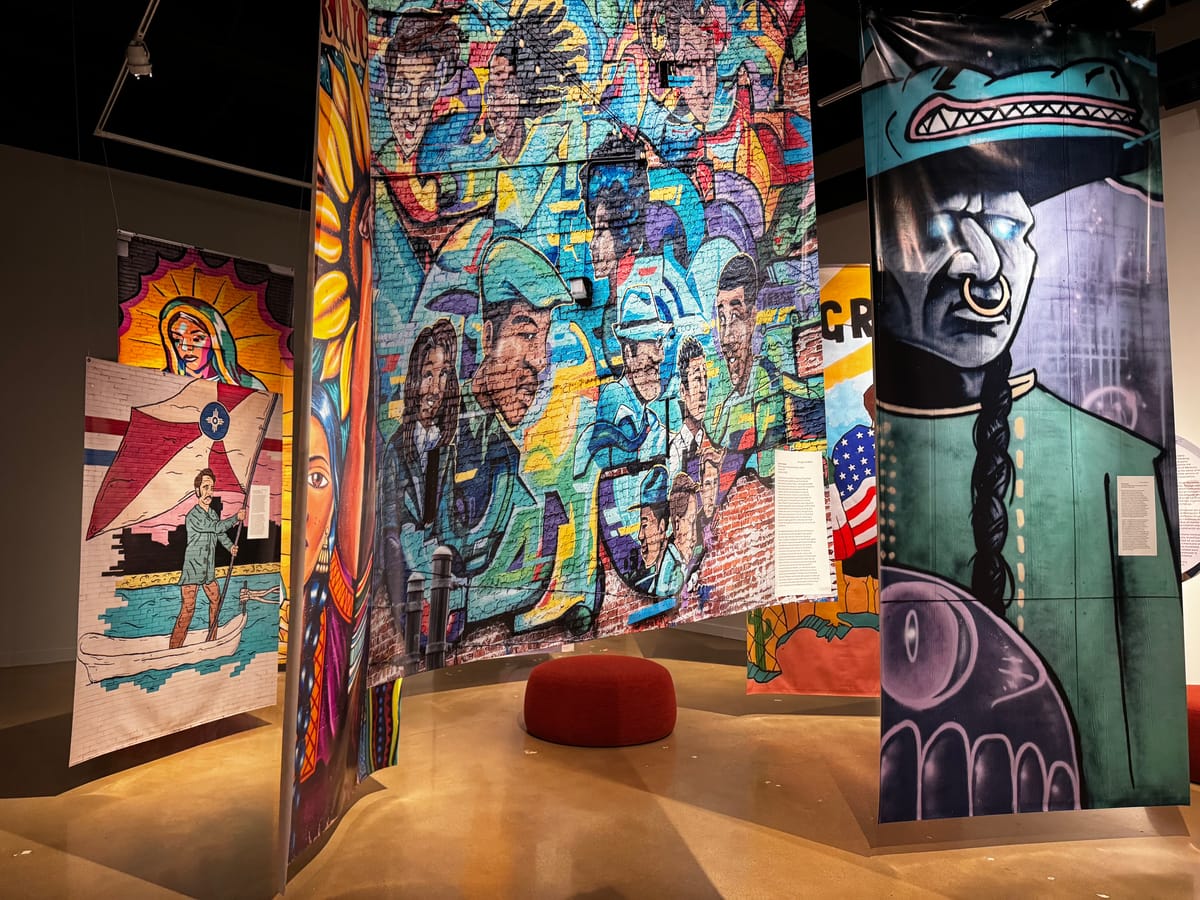‘Avian Migrations’ bridges technological, organic modes of expression
The Advanced Learning Library centerpiece is an interactive sculpture controlled passively by its patrons.
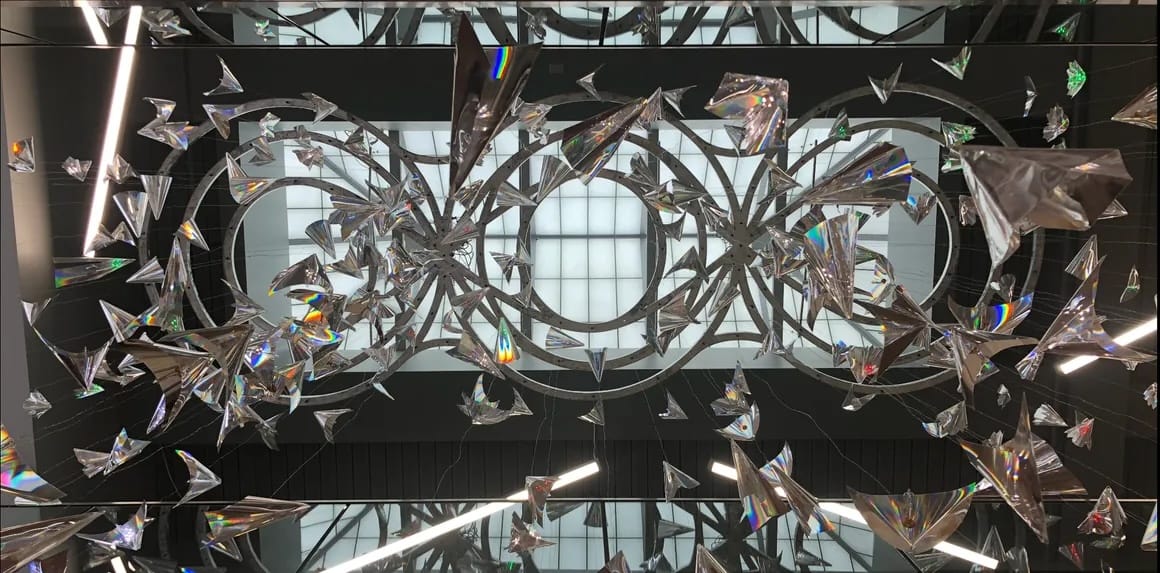
“Avian Migrations” commands a prominent space in Wichita Public Library’s central branch, the Advanced Learning Library. The mobile sculpture includes more than 150 avian forms – stylized birds, or perhaps paper airplanes – on strands of filament, hanging down from an aluminum frame that is itself suspended below a second-floor skylight. The strands, and the birds, extend down through a light well to the first floor, where they catch the eyes of library patrons entering the building.
It’s a public art piece that dances with light 24 hours a day, seven days a week. The “birds” are constructed of flexible, reflective sheets that glint chromatically in sunlight. The same material is used to make flat-screen displays such as computer monitors.
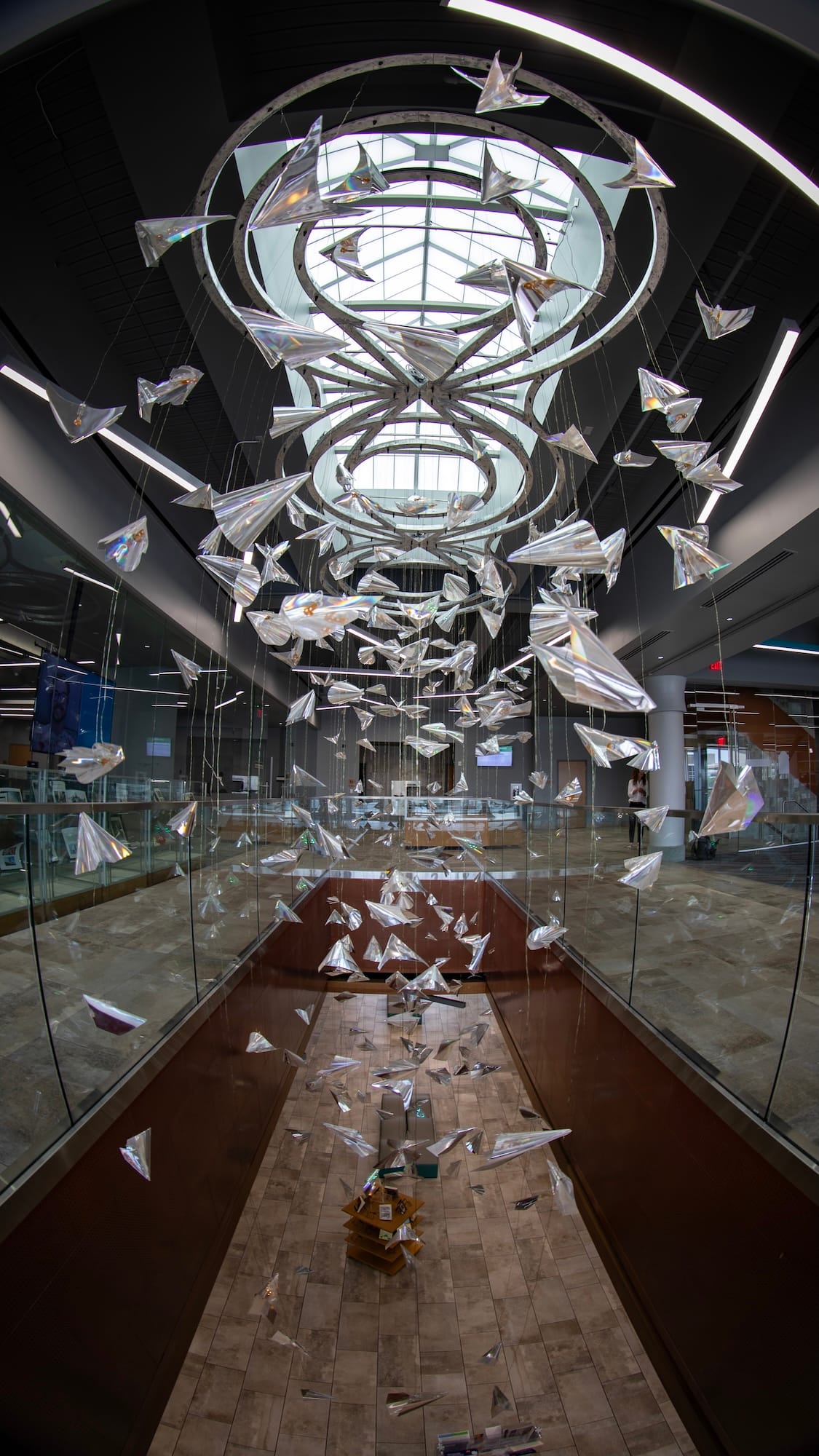
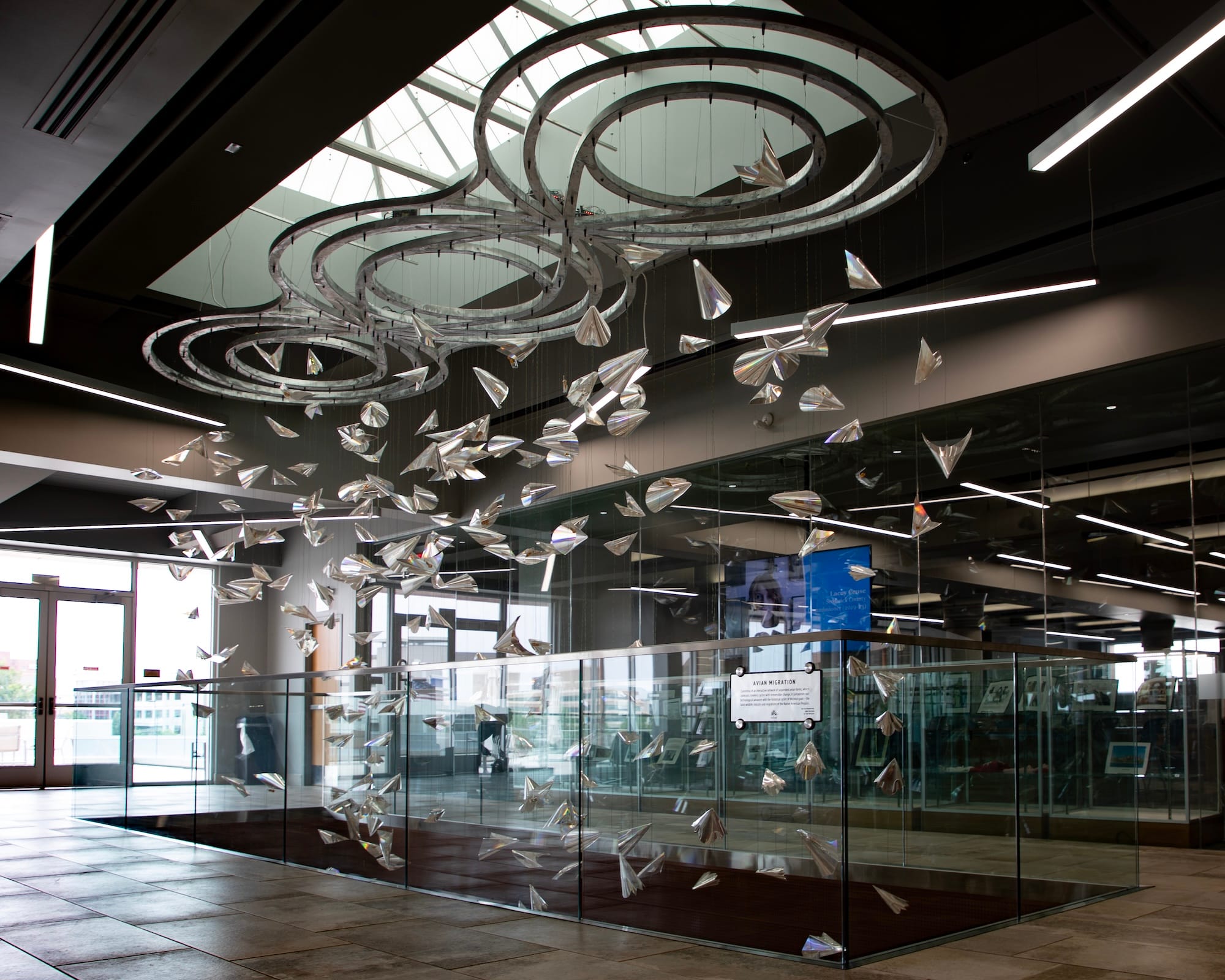
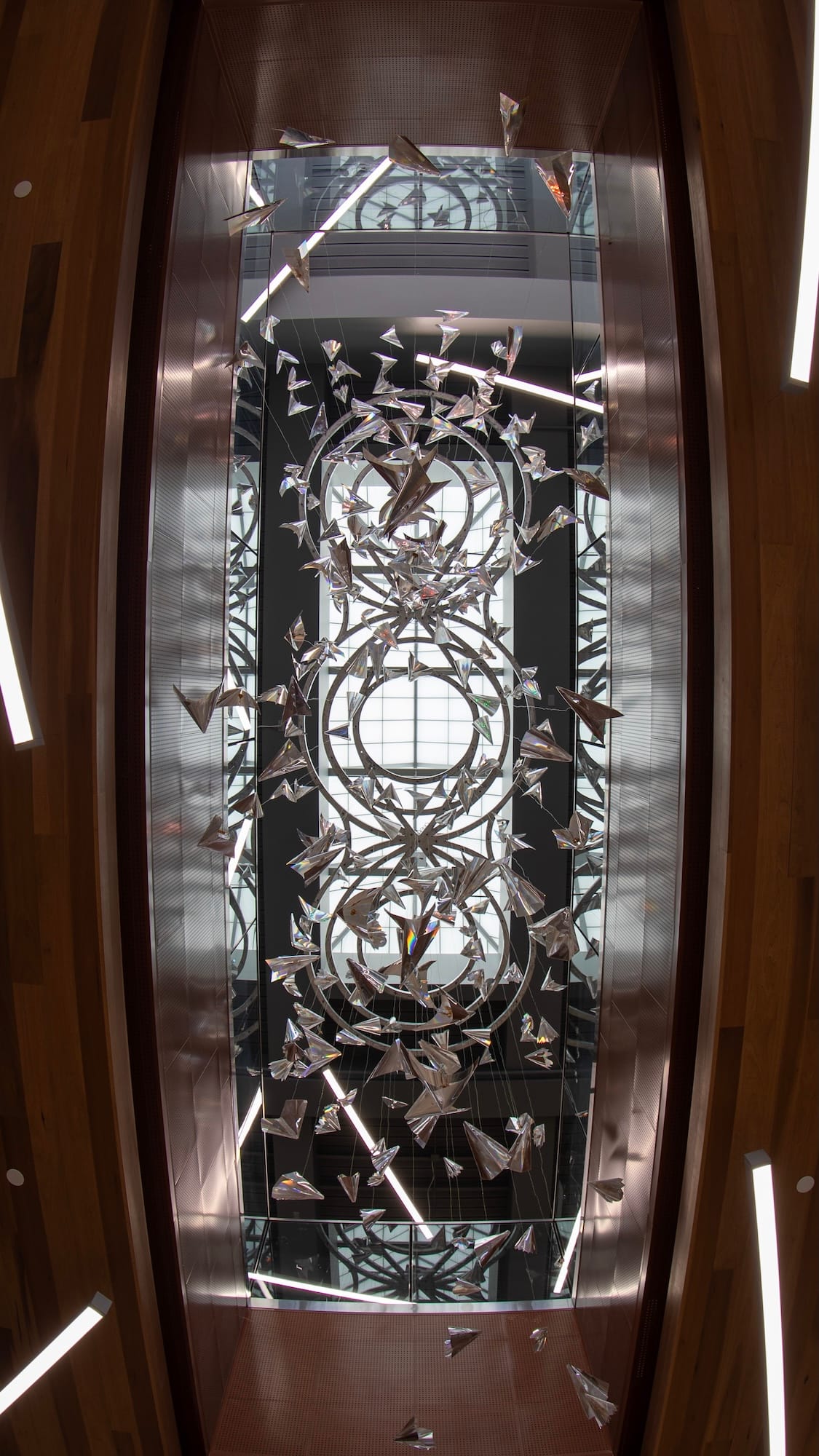
“Avian Migrations” is centrally located and visible on both floors of the Advanced Learning Library. Photos courtesy of the Wichita Public Art Collection.
Each bird carries an individually-controlled LED light, capable of flashing in various colors and at programmed times to animate the flights of the work’s title.
What most viewers probably don’t realize is that “Avian Migrations” is an interactive work. Eight motion sensors, spread out across the library, serve to control which of eight possible light patterns are set off. When the library is more active, the patterns shift more rapidly. At less active times, or when the library is closed, the piece settles into a more sedate, default state.
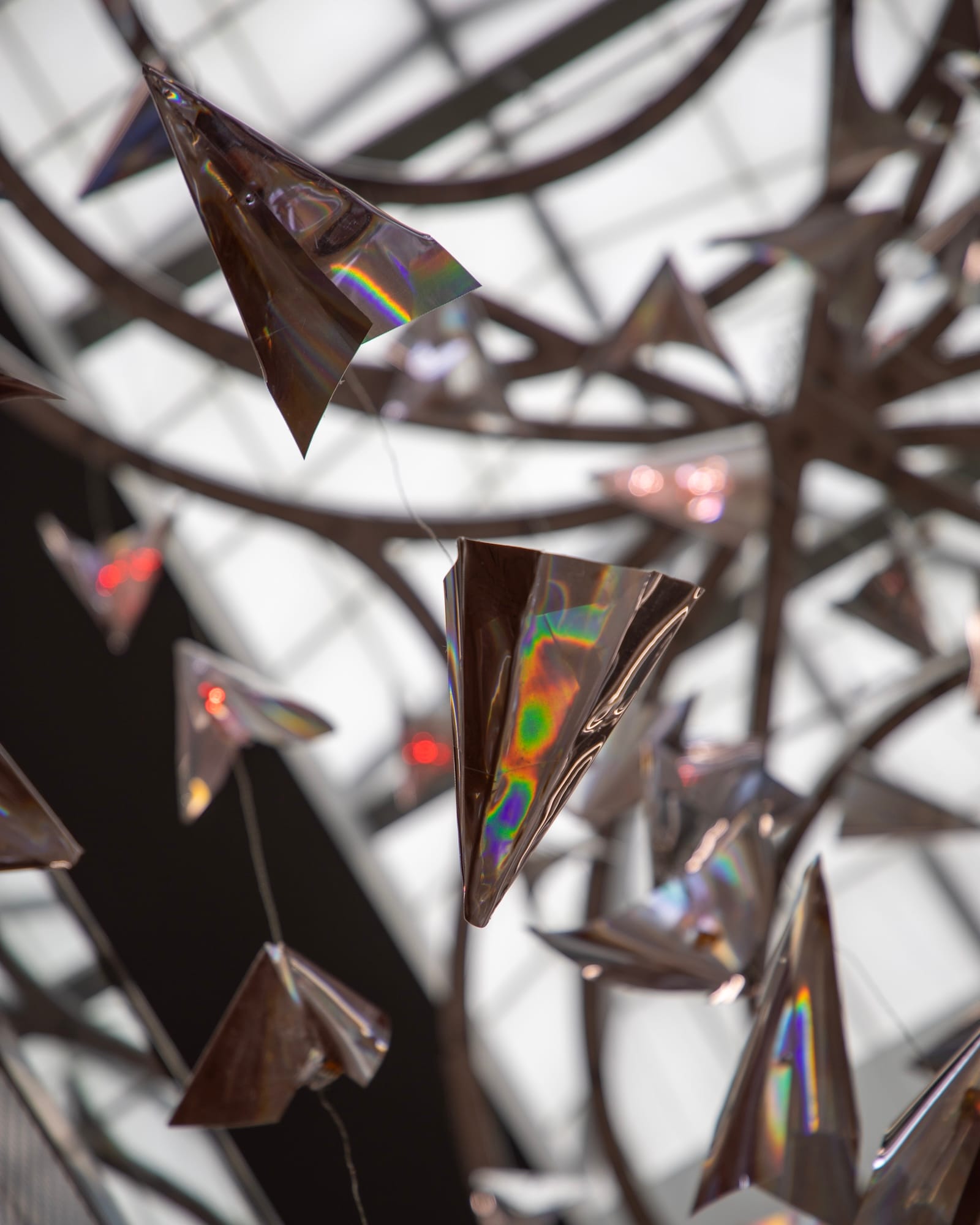
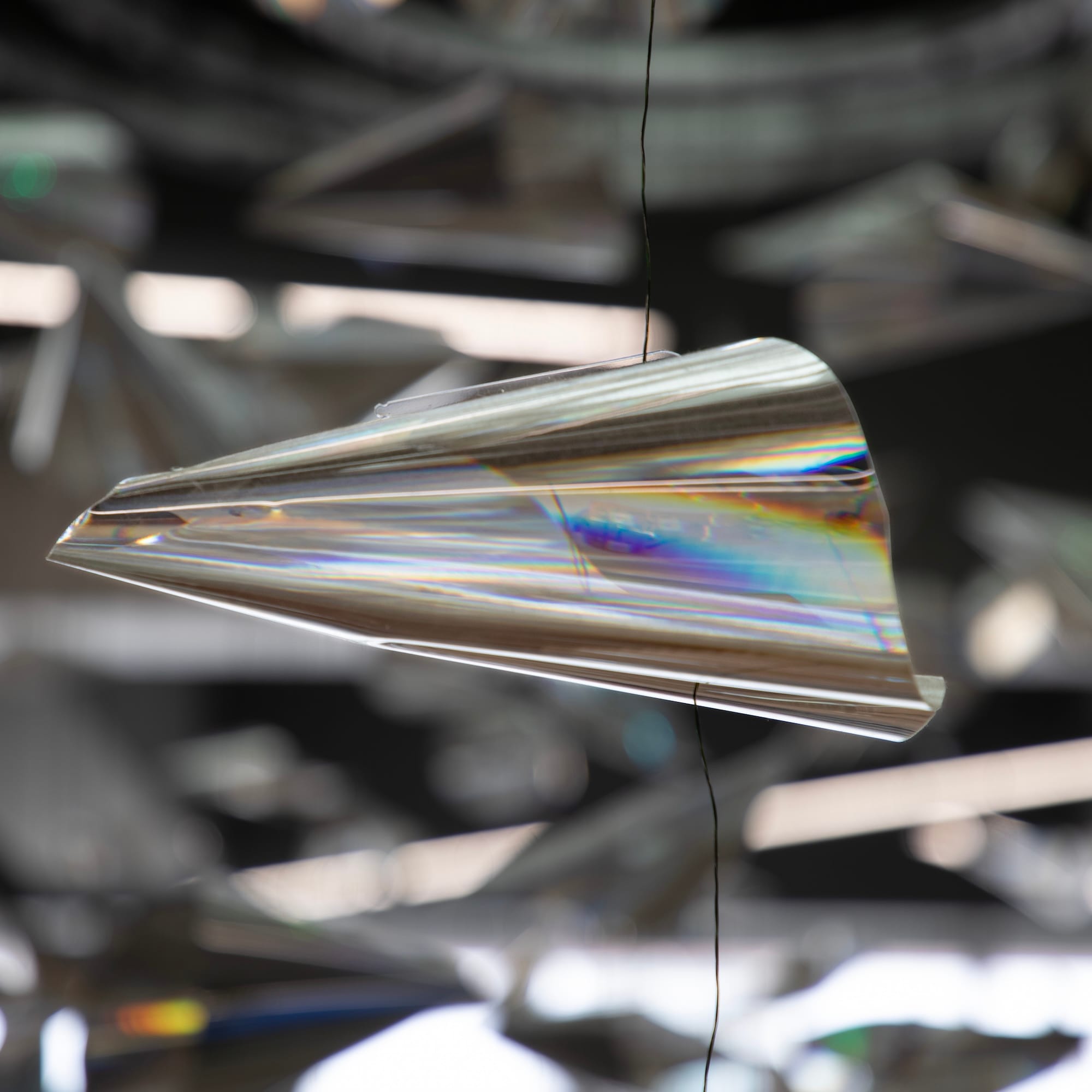
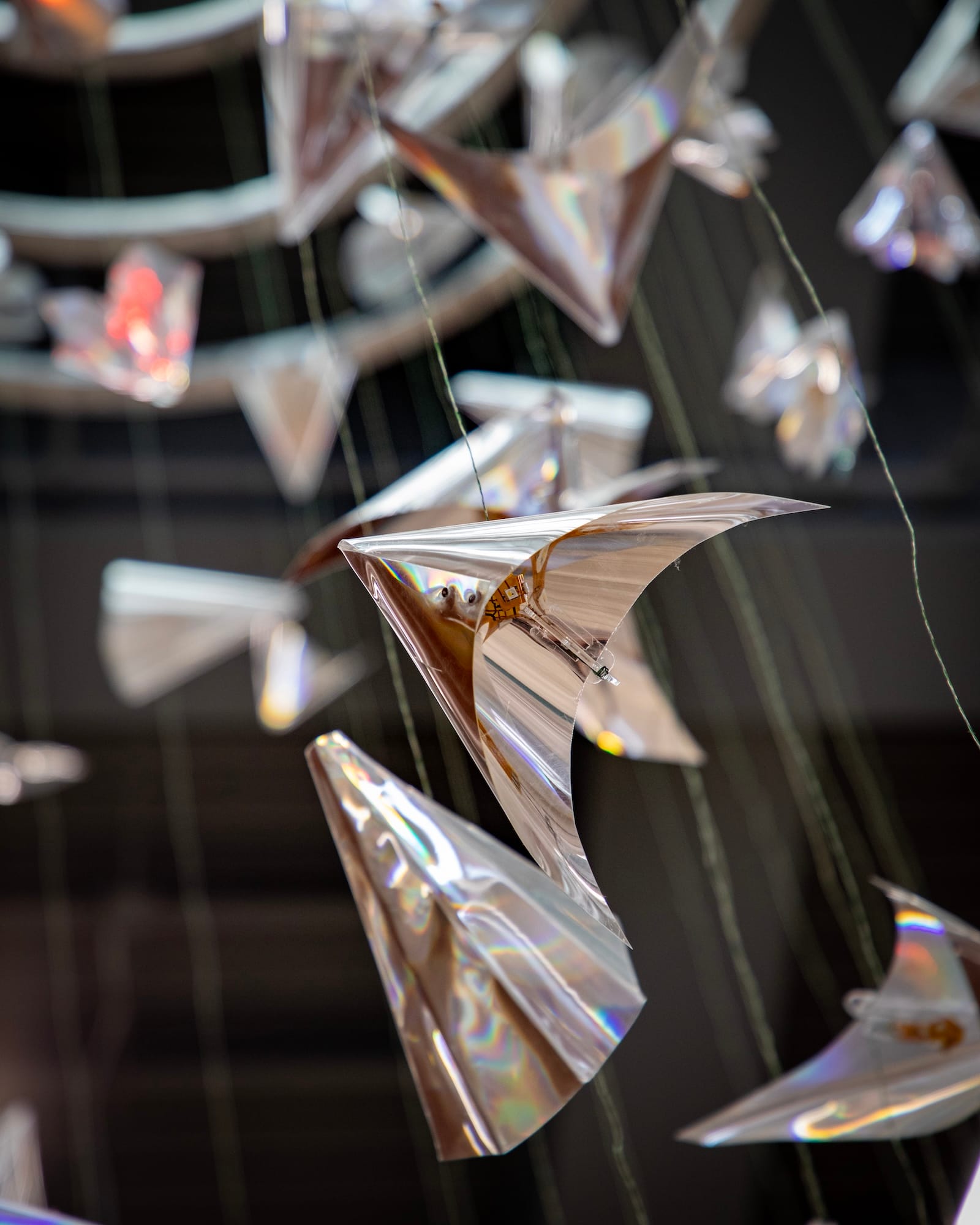
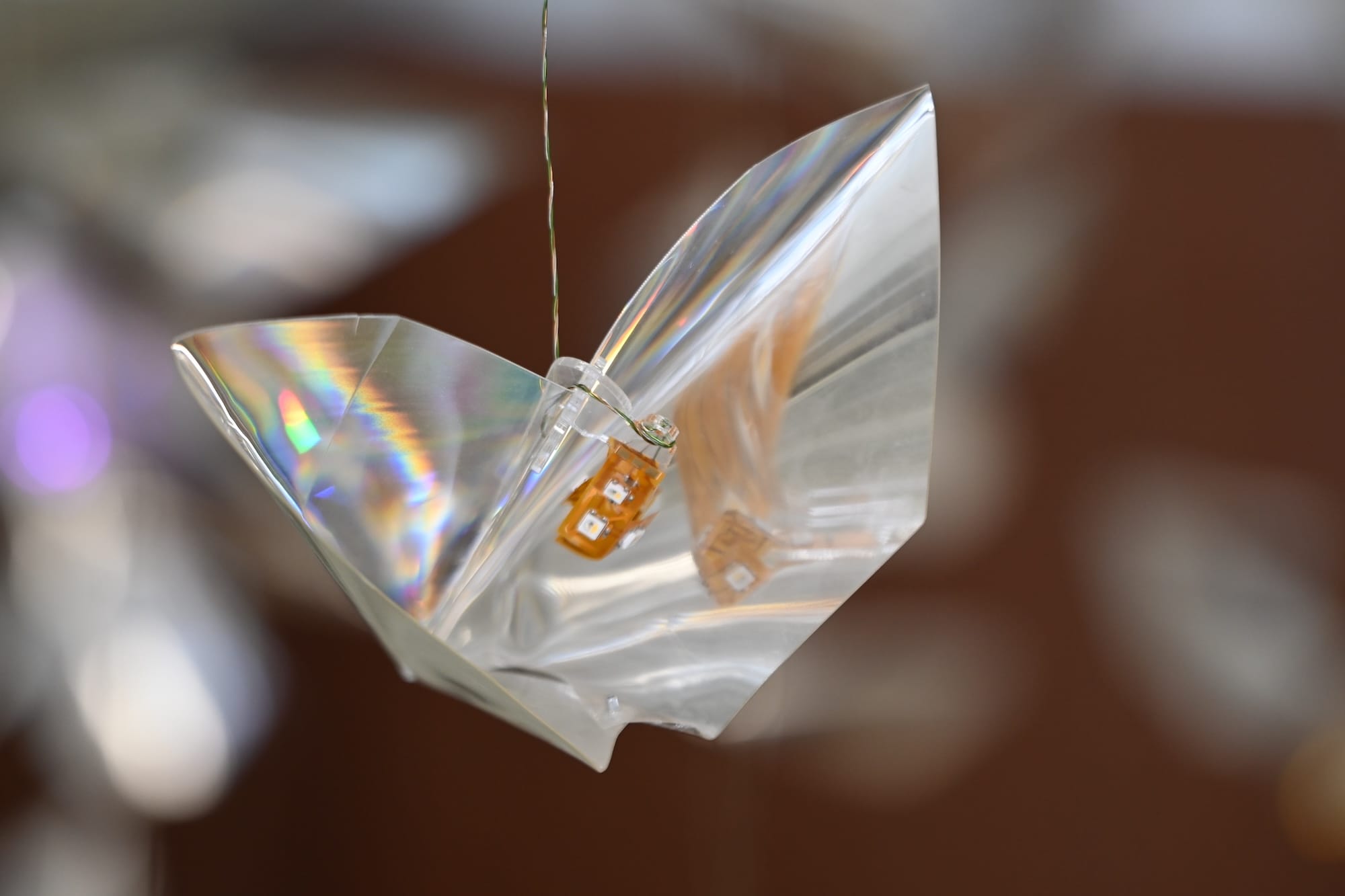
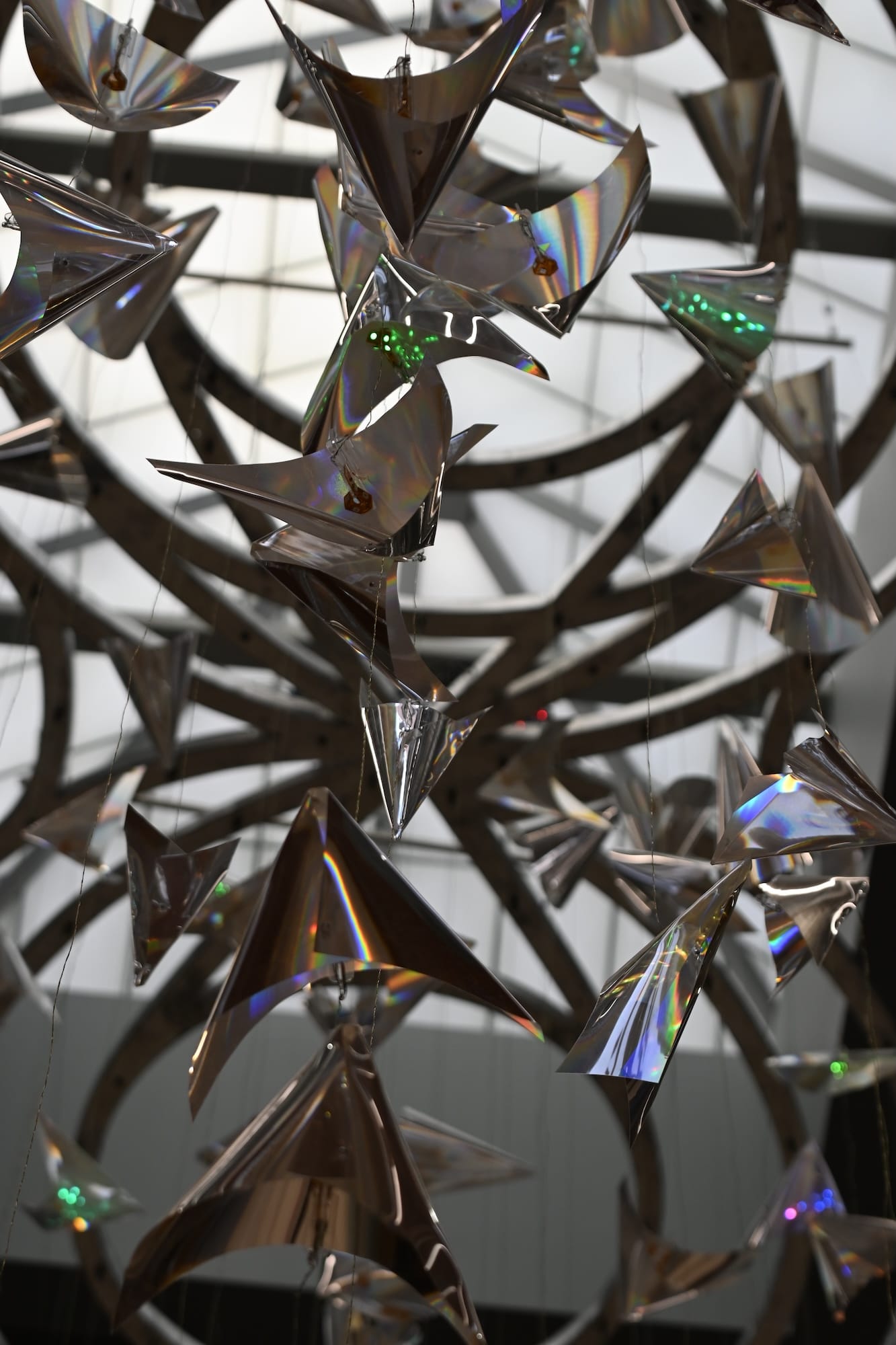
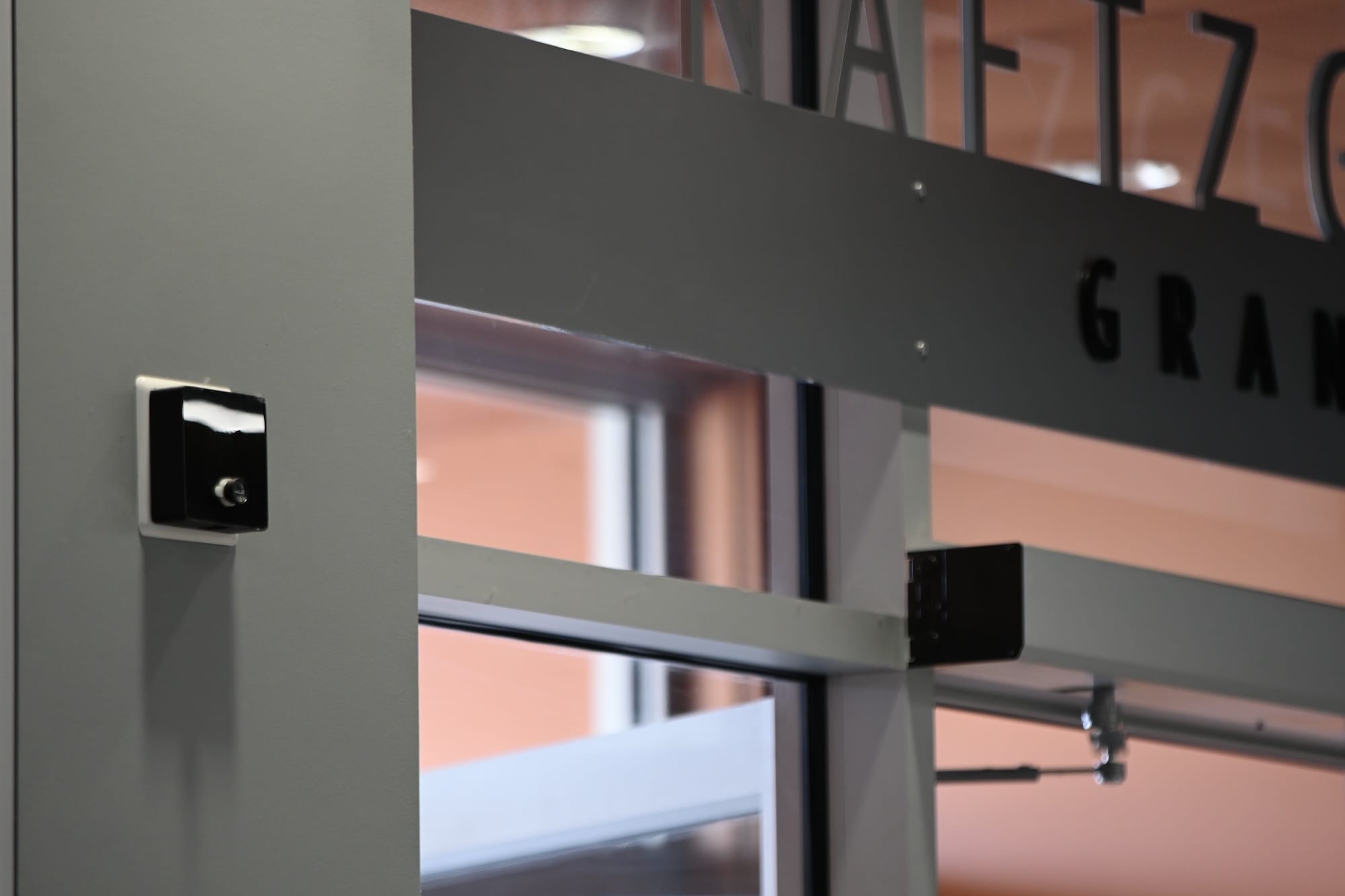
Rundstrom fabricated more than 150 “birds,” or avian forms. Each has a programmable LED light. McGuire handled the complicated electrical engineering demands of the project, and Harrison developed its computer program. At bottom left: one of eight motion sensors that influence the “flight” patterns displayed by “Avian Migrations.” The first three photos are courtesy of the Wichita Public Art Collection. The last three are by Sam Jack for the SHOUT.
Lisa Rundstrom, a multimedia artist, led the creation of “Avian Migrations,” which debuted along with the opening of the Advanced Learning Library building in 2018. At the time of its creation, she had recently departed Wichita State for a post at the Savannah College of Art and Design in Georgia. Her collaborators, John Harrison and Tom McGuire, also taught at WSU.
Sign up for the Weekly SHOUT, our free email newsletter
Stay in the know about Wichita's arts and culture scene with our event calendar and news roundup.
No spam. Unsubscribe anytime.
In developing the piece, Rundstrom sought to evoke not only literal avian migrations, but also the human migrations of Native Americans who long inhabited and traveled across this region. More abstractly, she was interested in reframing the artificial, constructed human world as something continuous with, rather than distinct from, natural processes that play out across vast timescales.
“People talk about natural light and artificial light – but light is light. To create it, something has to be burnt; energy has to be expelled,” she said. “What I see, and what I think about, is that this human civilization is an extension of the natural environment. Humans are animals, and we are part of the natural world.”
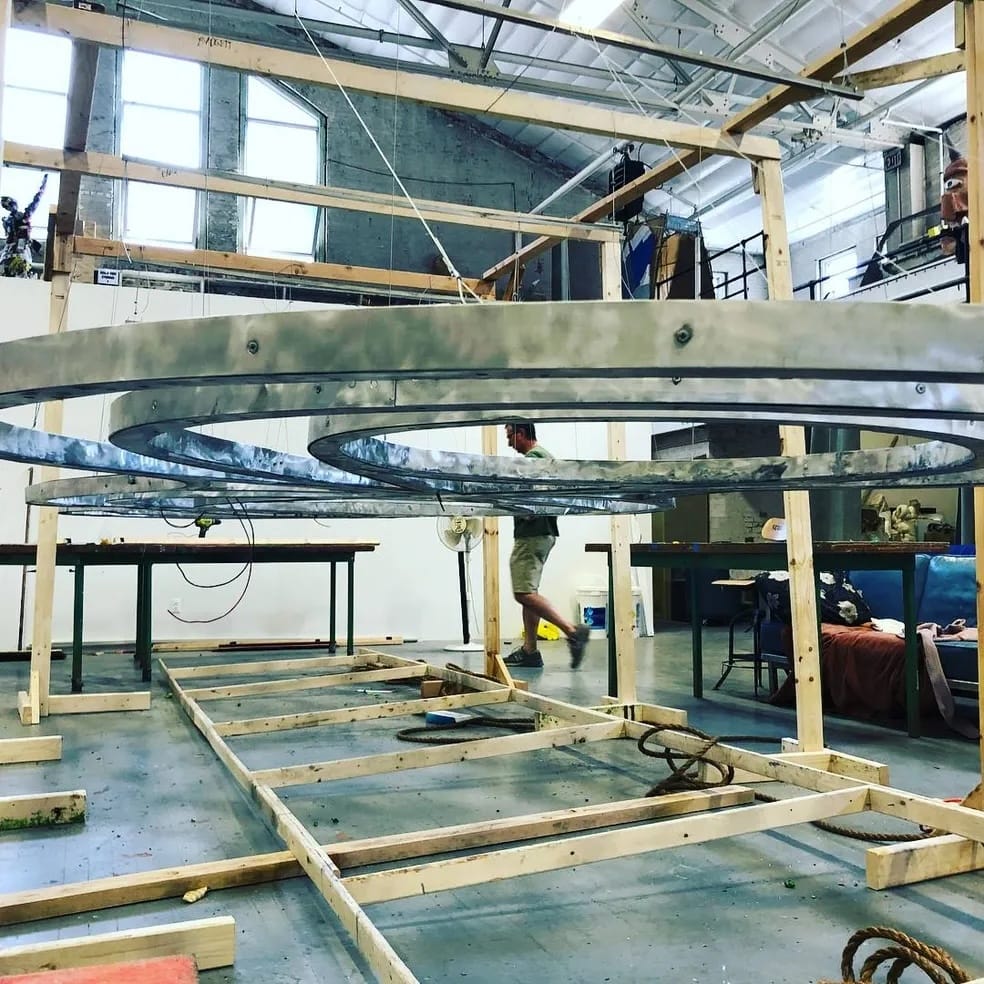
Harrison and McGuire share with Rundstrom an interest in expressing the richness of the analog and the organic through technological means. The two are among the members of Hack.Art.Lab, a collective of artists, programmers, and engineers. They are also two of the founders of MakeICT, a makerspace and community for artists, artisans, and inventors. McGuire describes himself as “a tinkerer, an inventor, and a creative” with a background in electrical engineering. Harrison is a violin virtuoso who was concertmaster of the Wichita Symphony Orchestra for 19 years, and he is also a computer engineer who earned a master’s degree at MIT’s famed Media Lab.
What most viewers probably don’t realize is that “Avian Migrations” is an interactive work. Eight motion sensors, spread out across the library, serve to control which of eight possible light patterns are set off. When the library is more active, the patterns shift more rapidly. At less active times, or when the library is closed, the piece settles into a more sedate, default state.
“I come from a music background, and I continue to be intrigued and a little surprised at how inexpressive, in general, digital interfaces tend to be, when compared to more traditional interfaces like a violin,” Harrison said. “Violin might be hard to learn, but it’s very expressive. Your connection with it, your feedback with it, is what’s powerful about it. Keyboards and mice don’t do that. Why is it that digital technology is so powerful, but the ways we interface with it are so much worse? A lot of my work is about playing with interfaces in ways that make them more expressive, more fun, more playful.”
In “Avian Migrations,” the entire Advanced Learning Library becomes an interface, albeit one that library patrons use passively, and mostly unwittingly. During the design phase of the piece’s creation, ensuring that that interface – the motion sensors, the LED lights, the software, and the hardware used to link them – would remain in working order over the long haul was a considerable technical challenge. Harrison addressed himself to the software part of that challenge, while McGuire focused on the hardware.
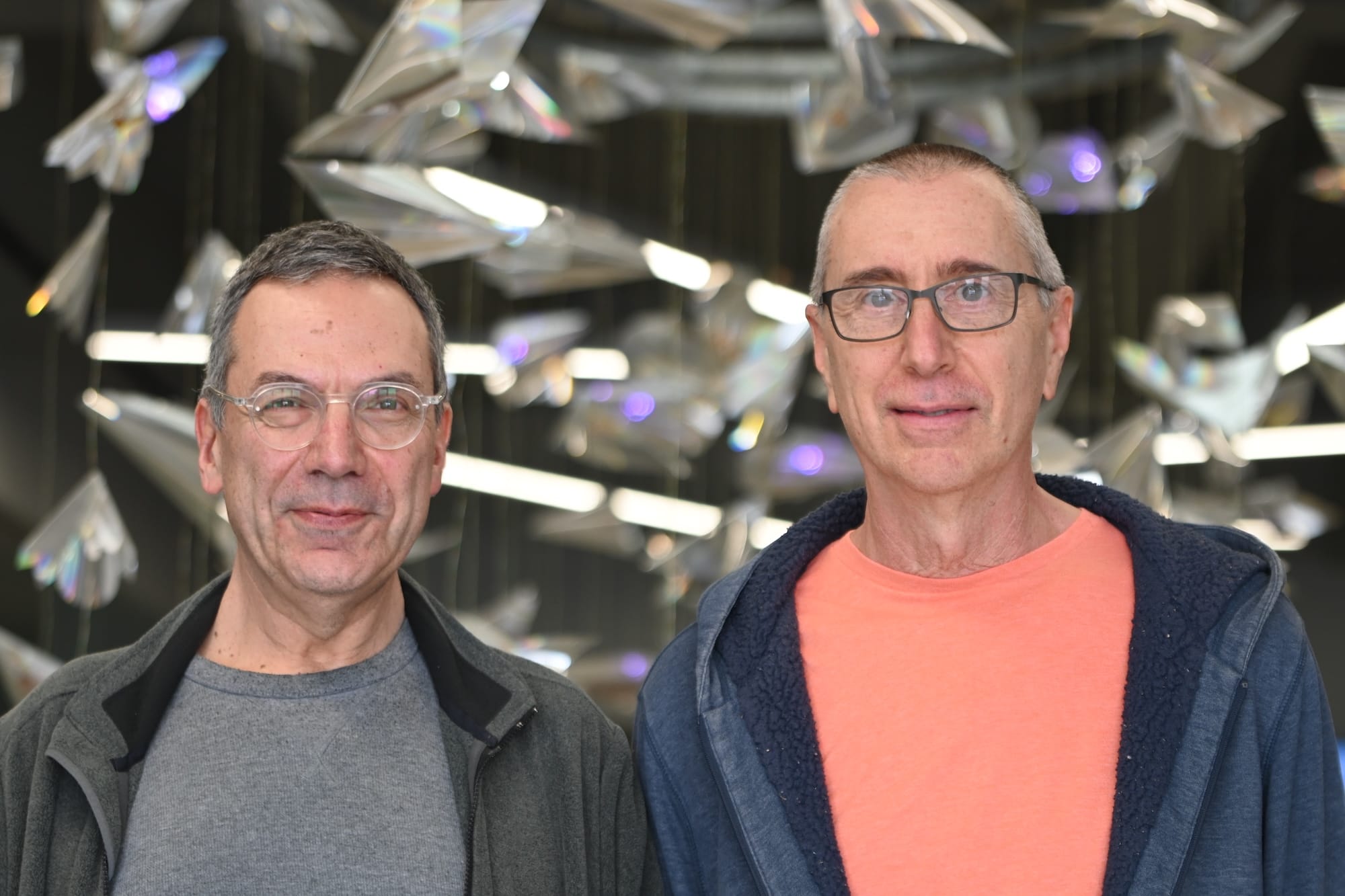
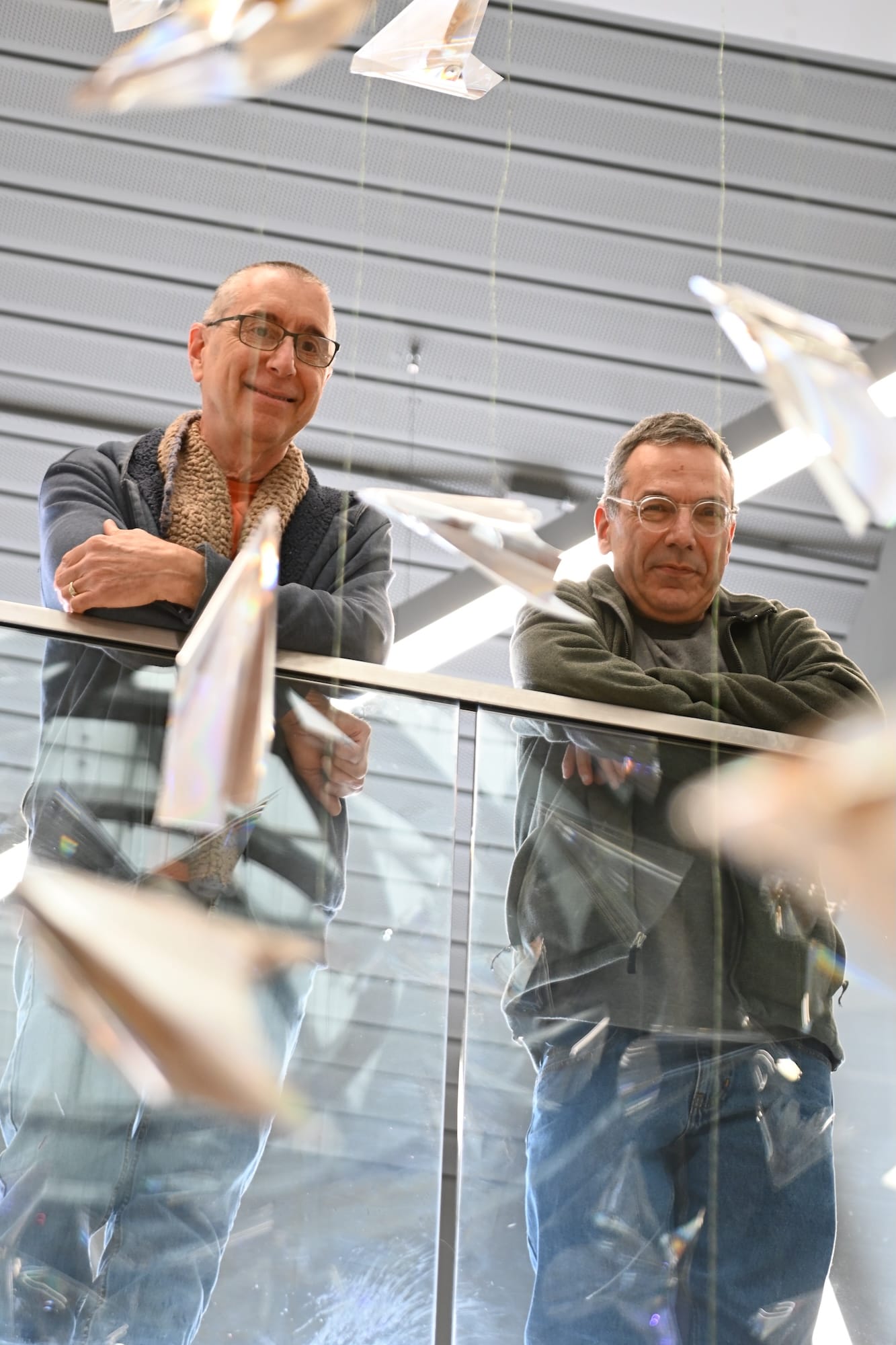
John Harrison (at left in the first photo) and Tom McGuire, along with Lisa Rundstrom, created “Avian Migrations,” the central public artwork inside Wichita’s Advanced Learning Library. The piece uses motion sensors to let the public’s use of the library influence shifting patterns of illumination. Photos by Sam Jack for the SHOUT.
“There was a long process of development and debugging with the circuitry, the communication, finding the right kind of wire and connectors to suspend the birds from,” McGuire said. “We wanted to make sure it was very functional when it went up, because it wasn’t coming down.”
When I met them at the Advanced Learning Library last month, McGuire and Harrison expressed satisfaction that, more than six years into its life, the system has continued to function as designed, without them even once being called in to troubleshoot or reboot it.
The computer that runs the LED lights and communicates via WiFi with the motion sensors is visible atop the piece’s hanging aluminum frame: a nest of cables, chips, and indicator lights.
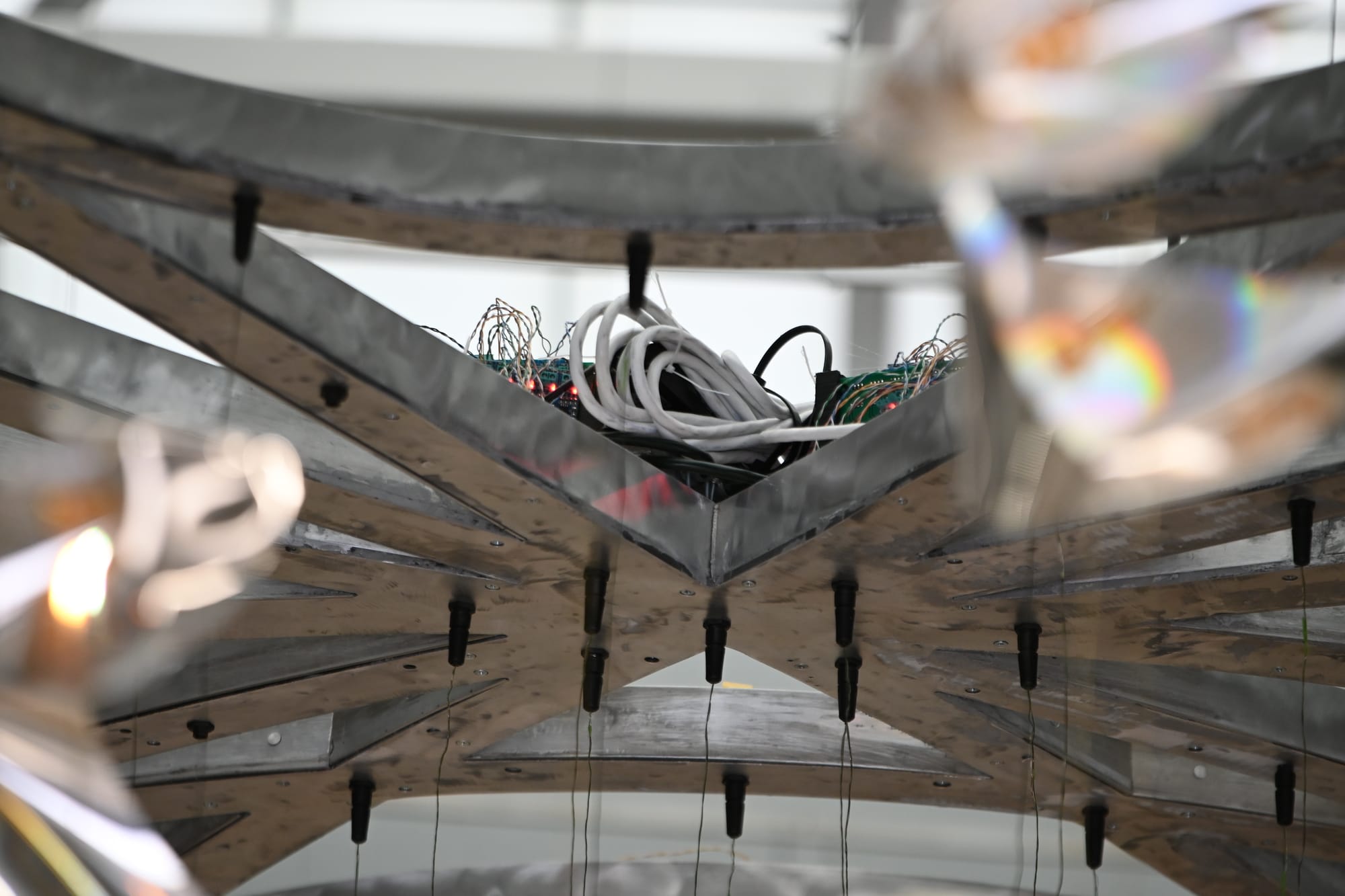
“It is running Linux, and the hardware is not that different from what you’d find on a desktop machine,” Harrison said. “It’s just that there’s no moving parts. A lot of thought went into keeping the processor cool enough with no fan. It’s sealed up. There’s no holes, so it’s dustproof.”
A computer interface might feel curiously inexpressive compared to a violin, but it’s miraculously responsive compared to the interface on your typical rock. And a rock, in a sense, is what a computer is, especially if you’re trying to imagine your way through the conceptual wall separating the artificial and the natural. A computer is lumps of silicon, copper, aluminum, and gold, with trace amounts of a few other minerals. Those lumps were dug out of the ground, refined, and placed in a very particular arrangement – one that woke them up.
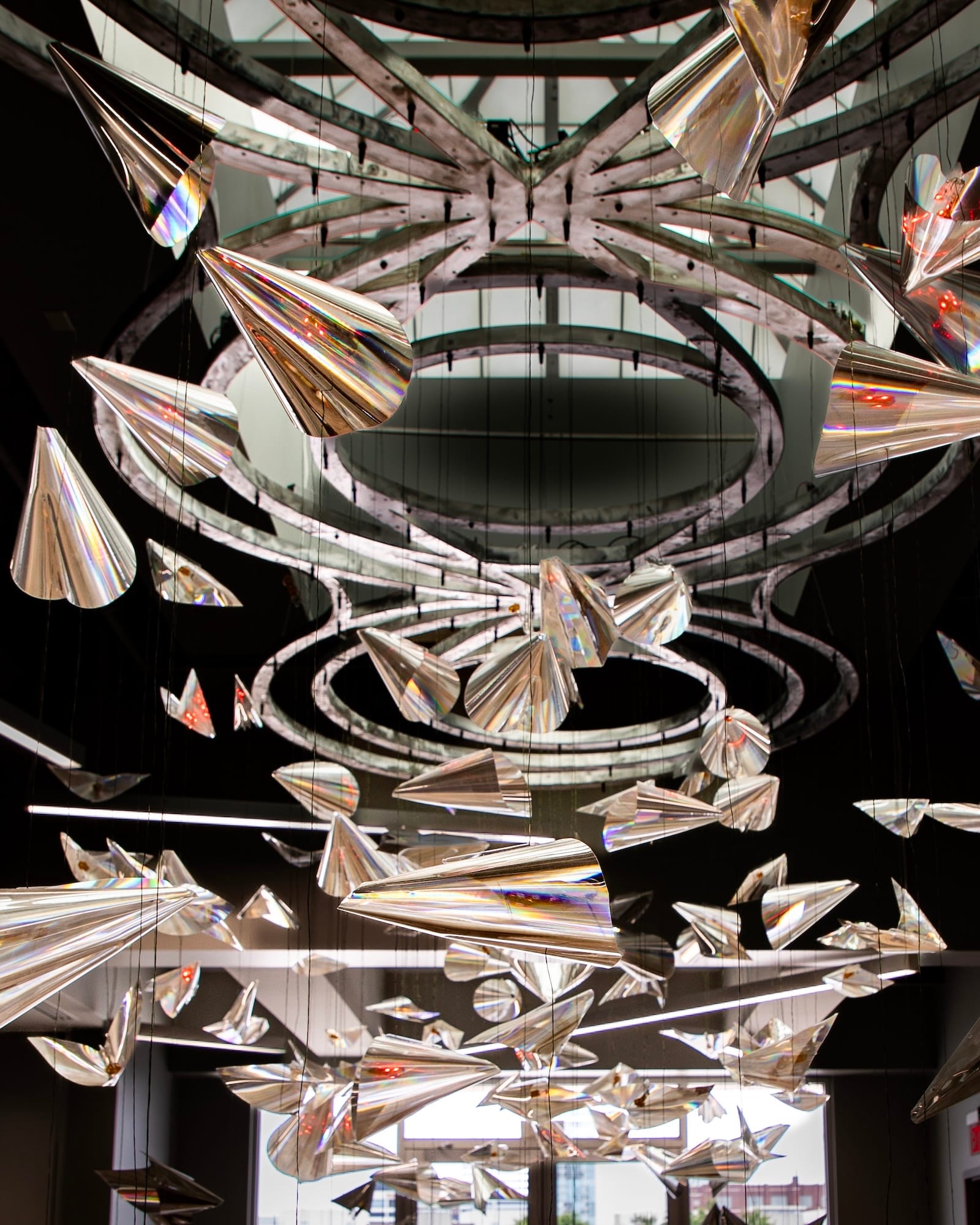
Rundstrom described the feeling that can be evoked by interactive digital art as “a sense of presence.” It’s a feeling that something whole and living is emerging all at once out of the frozen, mineral world, like Athena birthed full-grown from the forehead of Zeus.
“It has never stopped being magical to me,” Harrison said. “I can sit in front of a computer or circuit, and these things that seem really abstract become physically there. I am typing something on a keyboard here, and there’s this magic over there.”
Footage of the piece’s installation plays on a video board at the Advanced Learning Library.
The Details
"Avian Migrations"
Lisa Rundstrom, Tom McGuire, and John Harrison
plastic (organic material), LEDs, computers, electronic components, sensors, aluminum (metal)
Located in the Wichita Public Library's central branch the Advanced Learning Library, 711 W. 2nd St. N., "Avian Migrations" is part of the City of Wichita Public Art Collection.
Learn more on the Public Art Archive page for "Avian Migrations" and on the Wichita Public Library's public art page.
This story is part of a series about public art in Wichita that will continue throughout 2025.
Sam Jack is a poet, a classical tenor, and the adult services librarian at Newton Public Library. He performs with several local groups, including Wichita Chamber Chorale, Wichita Grand Opera, and Opera Kansas. He received a Master of Fine Arts in creative writing from the University of Montana.
More from the SHOUT
 The SHOUTOlivia D’Laine Schawe
The SHOUTOlivia D’Laine Schawe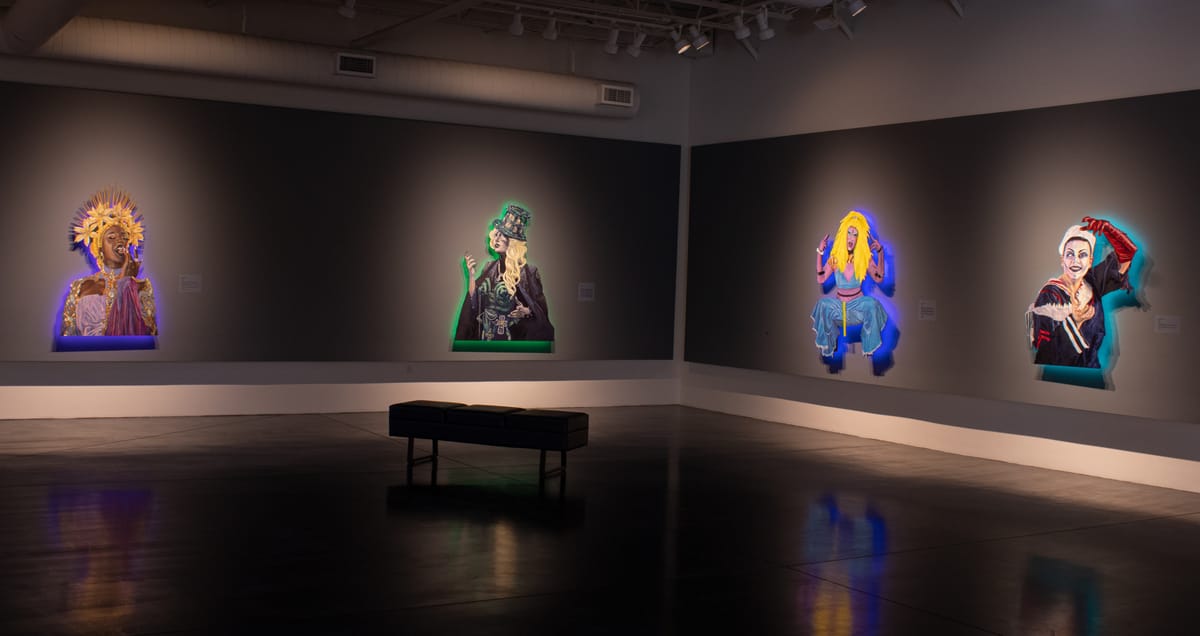
 The SHOUTJacinda Hall
The SHOUTJacinda Hall
 The SHOUTEmily Christensen
The SHOUTEmily Christensen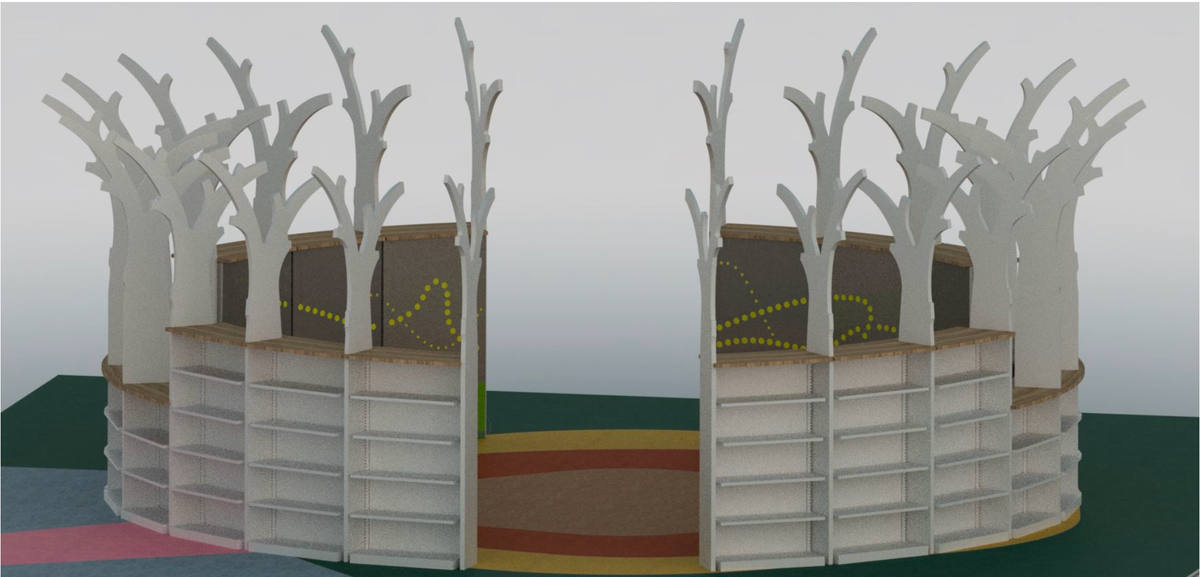
 The SHOUTKate Nance
The SHOUTKate Nance